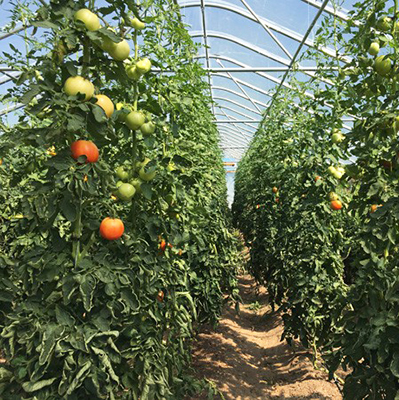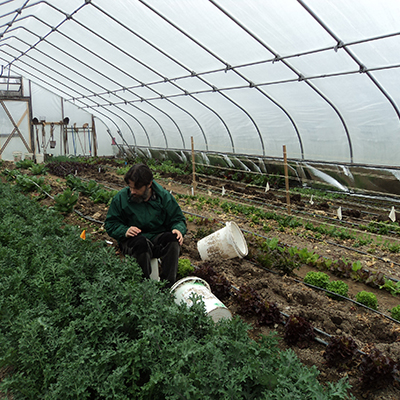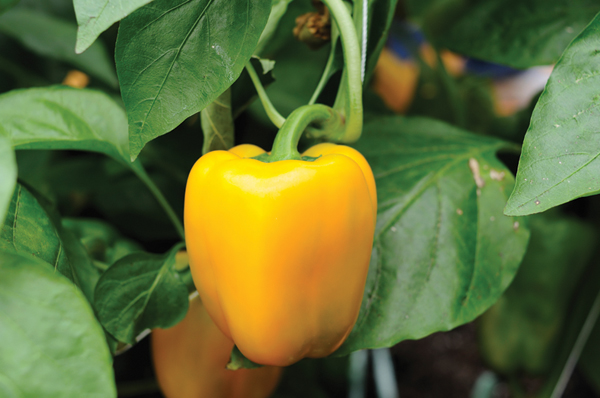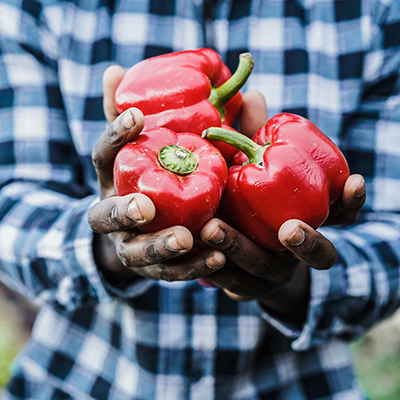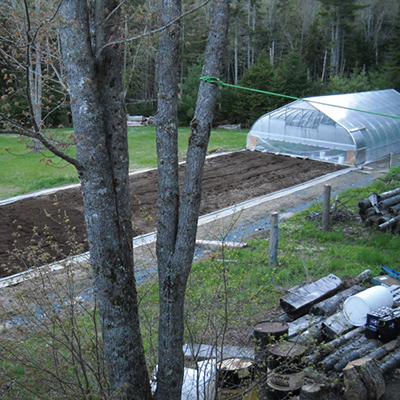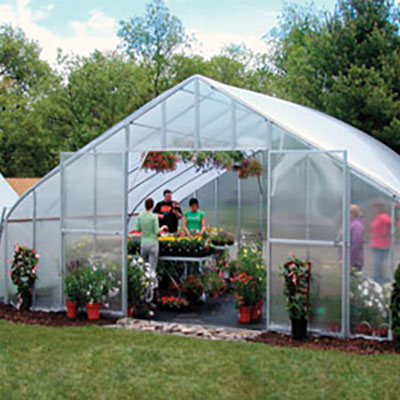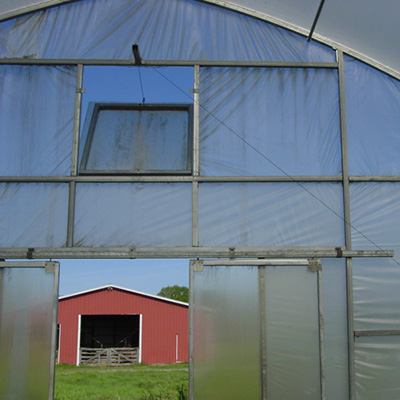Cucumbers can be a valuable crop when grown in a high tunnel. Like tomatoes, they are grown vertically on a trellis or string, so the yield per square foot can be impressive. The protected environment of the high tunnel allows for early and late production, and insect screening may thwart cucumber beetles in locations where the insects are a serious problem. Cucumbers can be grown in spring with tomatoes, or they can be the second crop after tomatoes, when tomato prices fall in mid summer.
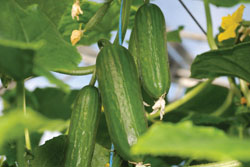
There are many kinds and hundreds of varieties of cucumbers, though, and it can be daunting to figure out which ones merit the valuable space in the high tunnel. Lewis Jett, commercial vegetable crops specialist at West Virginia University, has been researching high tunnel cucumbers for many years and has both general and specific recommendations.
First, you need to know the terminology of cucumbers. Slicers produce fruits with seeds and a relatively thick skin, so they are good for both retail and wholesale. European, or Dutch cucumbers (also known as hothouse or greenhouse cucumbers) are parthenocarpic — that is, they don’t require pollination to set fruit and are consequently seedless. They’re also sometimes called burpless because they reportedly produce less gas in sensitive people than other types. European cucumbers also tend to have thin skin and they lose fresh weight rapidly after harvest, which is why they are often shrink-wrapped in the supermarket. Beit Alpha cucumbers are also seedless but have a waxy layer on the skin that prevents fresh weight loss.

In evaluating cucumber cultivars for high tunnel production, Jett has found that parthenocarpic cukes don’t do as well in high tunnels as in greenhouses. In the closed environment of a greenhouse, they don’t get pollinated so they set seedless fruits. But in a wide-open high tunnel in summer, bees and other pollinators are free to visit the cucumber flowers. When they do, some of the fruits develop seeds and a bottleneck shape.
Last summer, Jett tested 10 cucumber cultivars to find those that work best for high tunnel production in late summer. Seven were varieties currently available from Johnny’s or Seedway and three were experimental. Seeds were planted in 50-cell trays in mid-August and 2-week-old transplants were planted in a high tunnel on Sept. 3. Plants were spaced 12 inches in the row, with 42 inches between rows. Each plant was pruned to one stem and trellised on a string trellis.
Harvest began on Oct. 10 and ran through Nov. 10, when a freeze killed the plants. Among the currently available varieties, the Beit Alpha ‘Socrates’ from Johnny’s produced the largest number of marketable cucumbers per plant or per linear foot of row. (Other top performers were two of the experimental varieties.) In one month of harvesting, Socrates (shown below) produced 5.2 cukes per plant. ‘Socrates’ is noted for performing well in cool weather, so it’s a good choice for fall crops.
Another high yielder was ‘Rocky’, a baby cucumber from Johnny’s, producing 6.9 cukes per plant. ‘Tasty Green’ and ‘Tyria’ had more misshapen fruit as a percentage of total marketable yield. “Tyria” was seedless with excellent quality, but yield was not significantly high.
Jett noted that yields would have been much higher if the cucumbers had been started in July, possibly after an earlier crop of tomatoes. Cucumbers also can be grown in spring through summer in the high tunnel.
Previous research conducted by Jett in Missouri identified several other varieties as good choices for the hoophouse. The highest yielding varieties in a 2005 trial were ‘Dasher II’, a slicing type from Harris Seed; ‘Indy’, a slicer from Seedway; and ‘Diva’, a slicer from Johnny’s.
Jett’s 2011 research report is available at http://www.hort.purdue.edu/fruitveg/rep_pres/2011-12/toc11.shtml
His 2005 research report can be found at www.hightunnels.org/ForGrowers/
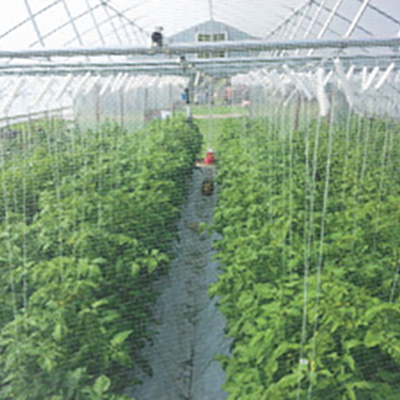

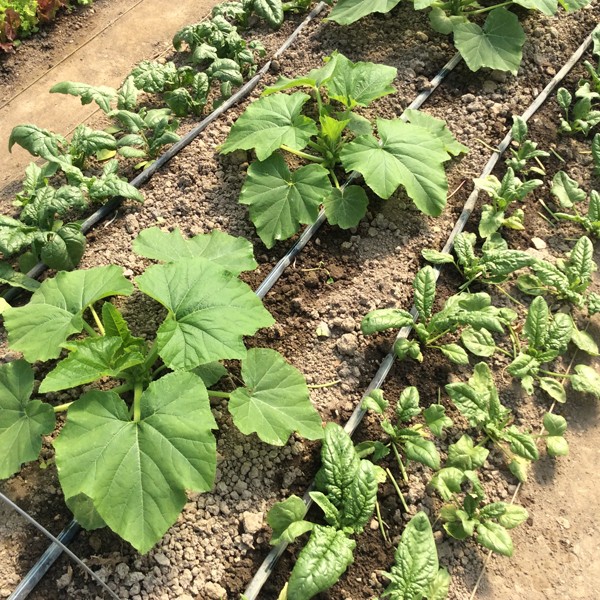 We have three main seasons in our zone 7 central Virginia hoophouse: fall-winter (October to March), spring-early summer (March to July) and high summer (August and September). We grow one bed (90’/27.5 m or so) each of yellow squash and bush cucumbers in the spring-summer season, for reliable early harvests and to help with crop rotation. If you farm in a colder climate than ours, you might be questioning allocating the precious real estate to a crop that so quickly goes from desirable to over-abundant, especially when there are more profitable things to give the space to. One reason is a difference between southern and northern climates.
We have three main seasons in our zone 7 central Virginia hoophouse: fall-winter (October to March), spring-early summer (March to July) and high summer (August and September). We grow one bed (90’/27.5 m or so) each of yellow squash and bush cucumbers in the spring-summer season, for reliable early harvests and to help with crop rotation. If you farm in a colder climate than ours, you might be questioning allocating the precious real estate to a crop that so quickly goes from desirable to over-abundant, especially when there are more profitable things to give the space to. One reason is a difference between southern and northern climates.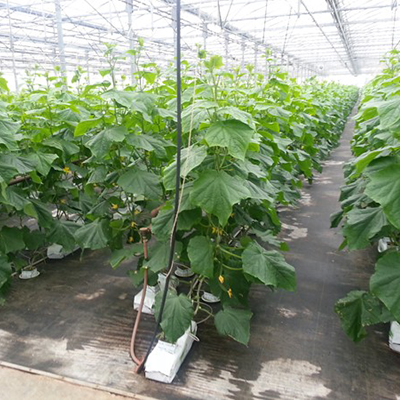
 I’ve often wondered why more market growers don’t use umbrella pruning for greenhouse and hoophouse cucumbers. It’s probably the most common way of growing cukes in greenhouses, and translates well to hoophouses and smaller structures with trellising in the 6-7’ range. I’m pretty sure the reason it’s not used more is unfamiliarity, since most smaller growers I’ve talked with don’t know about it. It’s called umbrella style because the main stem is grown up a string (the umbrella handle), topped at the wire, and two suckers are allowed to grow out to each side (the umbrella canopy).
I’ve often wondered why more market growers don’t use umbrella pruning for greenhouse and hoophouse cucumbers. It’s probably the most common way of growing cukes in greenhouses, and translates well to hoophouses and smaller structures with trellising in the 6-7’ range. I’m pretty sure the reason it’s not used more is unfamiliarity, since most smaller growers I’ve talked with don’t know about it. It’s called umbrella style because the main stem is grown up a string (the umbrella handle), topped at the wire, and two suckers are allowed to grow out to each side (the umbrella canopy).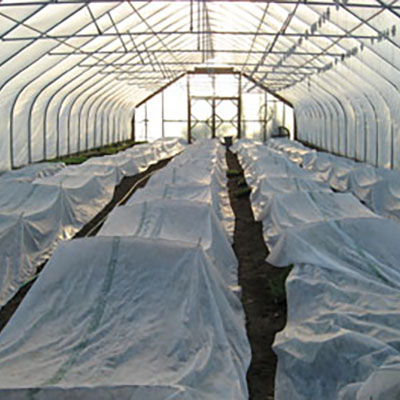
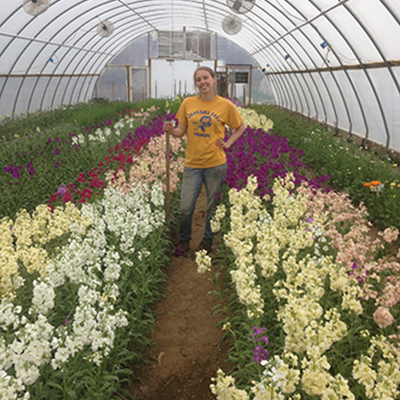

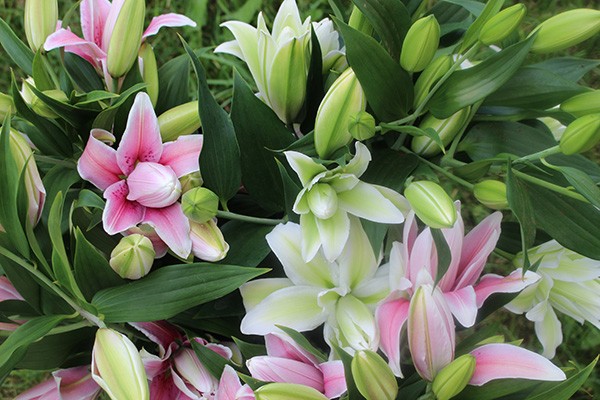 As soon as we start driving our routes in the spring our customers ask us when we’ll have roselilies. They’re that popular and have become a signature crop for us. They’re basically a type of oriental lily, but with multiple layers of petals, and without stamens and pistils (i.e. no pollen!).
As soon as we start driving our routes in the spring our customers ask us when we’ll have roselilies. They’re that popular and have become a signature crop for us. They’re basically a type of oriental lily, but with multiple layers of petals, and without stamens and pistils (i.e. no pollen!). 
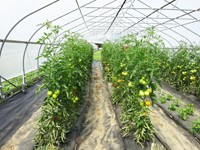

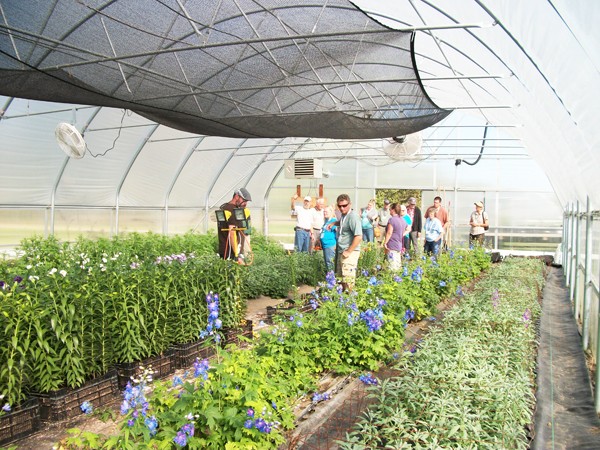 Prairie Garden Farm has been growing cut flowers for florists and studio designers since 2010. As we’re on an exposed hillside in west-central Minnesota, we’re dependent on protected culture to grow quality flowers. This article describes our approach – planning, financial, and operational details - that helps us make the most of our structures.
Prairie Garden Farm has been growing cut flowers for florists and studio designers since 2010. As we’re on an exposed hillside in west-central Minnesota, we’re dependent on protected culture to grow quality flowers. This article describes our approach – planning, financial, and operational details - that helps us make the most of our structures.